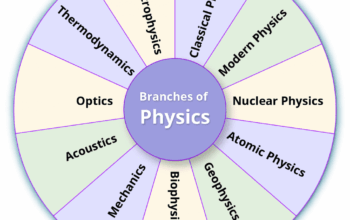In the contemporary landscape of American politics, the appointment of a new Energy Secretary carries significant implications not only for energy policy but also for the broader intersection of scientific inquiry and governance. The selection of a candidate with a robust background in physical sciences may herald a paradigm shift in the policy-making process, particularly in relation to renewable resources, climate change, and energy efficiency. This discourse examines the multifaceted ramifications of physics-informed policy decisions, as we venture into the nuances and complexities of the interplay between physics and energy policy.
1. The Significance of Scientific Expertise in Energy Policy
The first facet to consider is the cardinal role of scientific expertise in shaping energy policy. As the nation grapples with unprecedented challenges surrounding energy consumption and sustainability, the infusion of scientific principles into legislative frameworks becomes imperative. Policy makers who possess a profound understanding of physical sciences can facilitate more effective decision-making processes. This is particularly critical given the need for evidence-based policies that can withstand both scientific scrutiny and public discourse.
2. The Physics of Energy Sources
Energy policy cannot be disentangled from the fundamental principles of physics underlying various energy sources. From fossil fuels to nuclear energy and renewables, each type presents unique challenges and opportunities. Recognizing the thermodynamic principles governing energy transformation is essential for optimizing energy systems and improving efficiency. For instance, understanding the physics behind solar panels—how they convert sunlight into electricity—can lead to advancements in photovoltaic technology and storage solutions.
3. Climate Change and Policy Response
The current discourse surrounding climate change is inextricably linked to energy policy. As greenhouse gas emissions continue to escalate, the urgency for physicists to inform policy decisions becomes more pronounced. Effective policy responses necessitate an interdisciplinary approach, wherein physicists collaborate with environmental scientists, economists, and engineers to forge comprehensive strategies. By leveraging physical models to predict climate outcomes, policymakers can devise evidence-based interventions that target emissions reduction while promoting sustainable practices.
4. Renewable Energy Technologies and Innovation
Transitioning to a sustainable energy framework hinges upon the advancement of renewable technologies. The physics community plays a pivotal role in researching and developing innovative solutions, from wind turbines harnessing kinetic energy to hydropower systems converting potential energy into electricity. Exploration in materials science, particularly concerning superconductors and battery technologies, can lead to breakthroughs that enhance energy storage and transmission capabilities. For policymakers, embedding scientific research into energy innovation strategies is paramount for realizing a sustainable future.
5. The Economics of Energy: A Physics Perspective
While energy policy often grapples with economic considerations, a physics-oriented perspective offers a rich understanding of the underlying mechanisms at play. Concepts such as energy return on investment (EROI) can illuminate the efficiency of various energy sources and their associated economic viability. Moreover, the principles of entropy and the conservation of energy provide a theoretical underpinning for understanding the limits of resource extraction and utilization. Emphasizing these concepts can empower policymakers to establish economically sound energy policies that promote longevity and sustainability.
6. Public Engagement and Science Communication
The efficacy of energy policy is markedly influenced by public perception and engagement. Educating stakeholders and the general populace about the physics intrinsic to energy systems fosters informed discourse and robust advocacy. Science communication plays a critical role in demystifying complex scientific principles, thereby empowering citizens to participate in the policy-making process. Initiatives aimed at enhancing transparency and accessibility of scientific information can cultivate a more knowledgeable citizenry and, in turn, demand more accountable governance.
7. The Role of Interdisciplinary Collaboration
A successful policy strategy demands the integration of diverse academic disciplines. The synergy between physicists, engineers, economists, and other experts is crucial for addressing the multifarious challenges facing energy systems. Collaborative efforts can lead to holistic approaches that account for the technical, economic, and social dimensions of energy policy. As the Energy Secretary shapes the vision for national energy strategy, fostering interdisciplinary dialogue will be essential in constructing robust, forward-thinking policies.
8. Technological Evolution and Adaptation
In an era characterized by rapid technological advancement, energy policy must remain adaptable to new developments. The emergence of smart grids and IoT technologies fundamentally alters how energy is consumed and distributed. Policymakers equipped with a strong understanding of physics can better evaluate the implications of these innovations and craft policies that encourage their adoption while safeguarding public interest. Monitoring technological evolution offers a pathway to dynamic policy frameworks that can respond to shifting paradigms in energy consumption and generation.
Conclusion: A New Era in Energy Policy
The appointment of an Energy Secretary with a background in physics represents a critical juncture for American energy policy. By harnessing scientific expertise, policymakers can navigate the complexities of energy systems with a nuanced understanding of the underlying physics. As the nation faces the dual challenges of energy sustainability and climate change, the integration of dynamic scientific principles into policy frameworks is not merely advantageous—it is essential. The future of energy policy hinges upon our willingness to embrace a physics-informed approach, one that promotes innovation, addresses environmental challenges, and ultimately leads to a more sustainable world.










